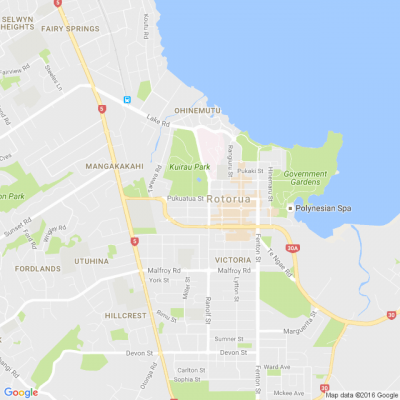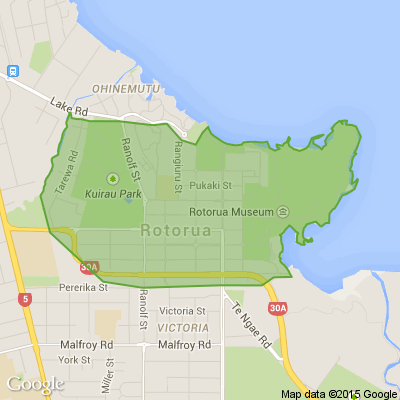
Know what’s happening
Access the private noticeboard for verified neighbours near you. Keep informed about any suspicious activity, send urgent updates to your neighbours when required and discuss emergency planning.
Get to know your neighbours
Browse the directory and start getting to know your neighbours. Don’t want to post to the whole neighbourhood? Send a private message.
Buy, sell and give away
Want to declutter your garage? Buy some used household items? Give away some garden stuff? Become a verified neighbour to browse and post items for sale. Trading is simple when everyone lives nearby.



Thank you for using Neighbourly
You may receive an email confirmation for any offer you selected. The associated companies will contact you directly to activate your requests.
Anne from Owhata
Looking for something a bit different to do on the afternoon of February 14th, after a leisurely lunch or before a romantic Valentine’s Day dinner?
Check out this unusual chamber music concert in which the Bay of Plenty Symphonia present ‘4 seasons’ – with a difference! - at 3pm at the … View moreLooking for something a bit different to do on the afternoon of February 14th, after a leisurely lunch or before a romantic Valentine’s Day dinner?
Check out this unusual chamber music concert in which the Bay of Plenty Symphonia present ‘4 seasons’ – with a difference! - at 3pm at the Harvest Centre, Malfroy Road, Rotorua.
Everybody loves Vivaldi’s ‘Four Seasons’ concertos – musical pictures of Spring, Summer, Autumn and Winter. In this concert, Vivaldi’s seasons are interspersed with the jazzy, tango-inspired ‘Four Seasons of Buenos Aires’ by Astor Piazzolla – a concert of fascinating contrasts with a common theme.
The performance features guest soloists Andrew Beer (violin – concertmaster of Auckland Philharmonia) and Ashley Brown (cello – founder member of NZTrio), who have plenty of opportunity to display the versatility and virtuosity of their playing. They are joined by a small group of string players from Bay of Plenty Symphonia, including four local Rotorua players; harpsichord player Chalium Poppy and BOP Symphonia conductor Justus Rozemond.
It’s very exciting to have this music brought to our doorstep so we would love to see you there! The soloists are amazing and our local players would love your support.
Tickets $5 for 18 and under; $20 Adult – from Eventfinda and i-SITE (booking fees apply). Door sales – cash only!
Te Whare Wānanga o Awanuiārangi
Whakatāne Campus Orientation
Te Whare Wānanga o Awanuiārangi will be hosting orientation days at our Whakatāne Campus from Thursday 11 February to Saturday 13 February for all of our students.
This is an opportunity to visit our campus, meet our staff and support services and your fellow … View moreWhakatāne Campus Orientation
Te Whare Wānanga o Awanuiārangi will be hosting orientation days at our Whakatāne Campus from Thursday 11 February to Saturday 13 February for all of our students.
This is an opportunity to visit our campus, meet our staff and support services and your fellow students.
If you are still considering study options for 2021, we also welcome you to attend our orientation event.
Our campus is located at 13 Domain Road, Whakatāne. Nau mai, haere mai.
You can find out more about our programmes here.
Find out more

Robert Anderson from Curtain Clean Rotorua
These five tips will help to keep your house greens looking lush!
1. Potting and repotting
When potting a plant, choose a pot that has good drainage and always use a good quality potting mix (I use Tully’s Perfect Potting). If you do have a pot without drainage, you can pot it in a smaller … View moreThese five tips will help to keep your house greens looking lush!
1. Potting and repotting
When potting a plant, choose a pot that has good drainage and always use a good quality potting mix (I use Tully’s Perfect Potting). If you do have a pot without drainage, you can pot it in a smaller plastic pot and pop it inside.
When repotting, pick a pot that’s one size bigger than the one you have, place some firmly packed potting mix in the bottom and a small sprinkle of plant fertiliser (I use Ecostore Organic Biophos). Give the plant a good water and gently tip the pot on its side and ease out the plant, place it in the new pot and gently fill with potting mix, press down soil and keep filling until you are about 2-4cm from the top of the pot.
2. Light
Most plants like bright indirect sunlight. Plants get their nourishment and energy from the sun so don’t be shy about placing them in bright sunlight. As the seasons change, watch the light levels and move plants closer or further away from windows. Some plants can survive in very dim light but give them a bright light holiday one day a week. Pale foliage is a sign that your plant might not be getting enough light and brown patches on leaves can mean the plant is getting singed.
3. Water
One of the most common reasons indoor plants die is overwatering. The majority of plants need to be watered once a week. Once a month place them in a sink or bucket and drench the soil and roots, then let the water drain out well before placing them back in their spots. There are a few plants that like more water, such as peace lilies, and some that like less, including ZZ plants and snake plants.
4. Humidity
Lots of indoor plants, and the majority of what we sell, originate from sub-tropical rainforest-type climates. They love a light misting daily or you can sit them in the bathroom while you take a shower.
5. Choosing plants
Pick the right plant for you and your lifestyle. If you are new to house plants, start with an easy-care plant such as a succulent or cactus, then you can graduate to other types. If you go away a lot choose a plant that can survive without attention. If you live in the city you might want to think about plants that have super air cleansing powers.
The whole process of choosing plants and their weekly routine can be quite meditative. Enjoy the watering rituals you create — it’s a good chance to practise your mindfulness. Just remember once you start it’s hard to stop!

The new school year is upon us! Though we can’t predict what 2021 will bring, we can set our children up for success, and help them start the school year strong.

Lorna Thornber Reporter from Stuff Travel
Hi there,
Canterbury has been named the fifth most welcoming region in the world in the Booking.com Traveller Review Awards, while Oamaru, Hokitika and Invercargill have been named the most welcoming towns in NZ. They were followed by Cambridge, Picton, Lake Tekapo, Kerikeri, Palmerston North, … View moreHi there,
Canterbury has been named the fifth most welcoming region in the world in the Booking.com Traveller Review Awards, while Oamaru, Hokitika and Invercargill have been named the most welcoming towns in NZ. They were followed by Cambridge, Picton, Lake Tekapo, Kerikeri, Palmerston North, Paihia and Twizel.
We'd be really keen to hear your thoughts on this based on your own travels around New Zealand. Do you think Canterbury is NZ's most welcoming region? And are these our most welcoming towns?
Where in NZ have you been made to feel particularly welcome on your travels?
As usual, please put 'NFP' in your comment if you don't want it to be included in an article. Cheers.
90 replies (Members only)
The Team from Neighbourhood Support New Zealand
Love is in the air this month! We’re not just talking about Valentine’s Day, we’re talking about this month’s national campaign.
Our theme for February is all about finding ways to show your home and community a little extra love and care. Whether it’s organising a street clean up, … View moreLove is in the air this month! We’re not just talking about Valentine’s Day, we’re talking about this month’s national campaign.
Our theme for February is all about finding ways to show your home and community a little extra love and care. Whether it’s organising a street clean up, helping a neighbour tidy up their property, collaborating on a mural, putting together a working bee, or installing a communal pātaka or library - there are countless ways to make our neighbourhoods more beautiful and enjoyable for everyone.
Share your tips, projects, photos and experiences with us by tagging us in your social media posts or emailing us at:
info@neighbourhoodsupport.co.nz

Robert Anderson from Curtain Clean Rotorua
We are passionate about fabrics and finding the right solutions for our customers. With over 110 years of experience in the textile industry we have compiled some of this knowledge and look forward to sharing it with you over the next year through our blog series – An Educational Yarn. Our … View moreWe are passionate about fabrics and finding the right solutions for our customers. With over 110 years of experience in the textile industry we have compiled some of this knowledge and look forward to sharing it with you over the next year through our blog series – An Educational Yarn. Our first topic explores the different characteristics of textile fibres.
Textile fibres are natural or synthetic structures that can be spun into yarn. Yarns are then woven, knitted or bonded into fabric. The inherent characteristics of fibre properties directly relate to the performance and required care and maintenance of the finished fabric, therefore understanding fibres and yarns will in turn help you to understand the how to apply specific fabrics within your interior schemes.
Natural Fibres: Occurring in nature; which are of animal, vegetable/plant or mineral origin.
COTTON (Plant Origin)
• A strong fibre, even stronger when wet, cotton has good natural durability.
• Can be affected by mildew however a mildew resistant finish can be applied to reduce this issue.
• Generally has reasonable sunlight resistance but should be protected with a quality lining when used as a drapery and protected from direct sunlight when used as an upholstery.
• It is an absorbent fibre which means it can move with changing humidity levels.
• May shrink with laundering but this can be reduced through a finishing process on the fabric known as sanforising.
Sunlight resistance can be greatly reduced in acidic polluted conditions.
SILK (Animal origin; an animal fibre that comes from the silkworm. The silkworm creates its cocoon from very long silk fibres which are harvested from mulberry trees.)
• It is naturally fine in texture, and colours beautifully.
• Its biggest disadvantage in furnishing is its sensitivity to UV light degradation (direct and reflected). Due to its sensitivity, it should not be used in direct sunlight or even bright light.
• An absorbent fibre, it has the potential to move in humid environments.
• Silk is a relatively strong fibre and can withstand a certain amount of abrasion, particularly when used in conjunction with
• a backing fabric.
• Unrivalled in splendour and smoothness, silk is regarded the most exclusive of all natural fibres.
LINEN
Plant origin; derived from cellulose fibres that grow inside the stalks of the flax plant.
• As with cotton it is affected by acidic pollution.
• Can be affected by mildew which will likely cause the fibre to deteriorate over time.
• Considered to be the strongest of the natural fibres; if constructed for upholstery it is very durable, particularly when blended with up to 10% nylon.
• Is regarded as a luxury fibre because of its lustre and texture.
• It is an absorbent fibre which means it can move with changing humidity levels
• Linen has moderate sunlight resistance and should be protected by a quality lining when used as a drapery and protected from direct sunlight when used as an upholstery.
Keep reading: www.curtainclean.co.nz...

Sheryl from Ngongotaha
Lovely floaty floral Summer dress
Izabel Size 14
Brand New Never worn
Ruched front, tie waist, lined, looks & feels lovely on
Brought for $80 sell for $35
Price: $35
Washing chicken doesn’t remove bacteria, it just spreads it around. The best way to protect your whānau from getting sick is to wash your hands and kitchen tools after touching raw chicken, and make sure you cook chicken all the way through. Juices
should run clear and there shouldn’t be any … View moreWashing chicken doesn’t remove bacteria, it just spreads it around. The best way to protect your whānau from getting sick is to wash your hands and kitchen tools after touching raw chicken, and make sure you cook chicken all the way through. Juices
should run clear and there shouldn’t be any pink meat in the centre.
Remember to Clean Cook Chill and check our easy food safety tips here.
The team at New Zealand Food Safety.
Find out more

Dennis from Lynmore
Hi is there anyone on Neighbourly who arrived in New Zealand on the Oriana in March 1966 would like to chat?
Delwyn from Rotorua Central
All in great condition
1 x size 16 Academic Blazer pristine new condition - badges included
1 x size 10 shirt $20
1 x size 10 (Yr 12 & 13 skirt) $40
1 x size 16 white long sleeve shirt (go under grey tunic) $5
Price: $20
Robert Anderson from Curtain Clean Rotorua
Look, we have to be honest, curtain linings are not the sort of thing that will blow your hair back with sheer delight. It’s sort of hard to get excited about a functional item like this – a bit like getting excited about a new water heater, carpet underlay, or new gutters…! It’s usually … View moreLook, we have to be honest, curtain linings are not the sort of thing that will blow your hair back with sheer delight. It’s sort of hard to get excited about a functional item like this – a bit like getting excited about a new water heater, carpet underlay, or new gutters…! It’s usually the face fabric, the star of the show at the window that brings the pizazz, colour or texture to a space, with lining tucked in behind, performing the admirable duties of light blocking and fabric protecting.
However, these are virtues to be celebrated as they help us make bolder decisions about the drapery fabrics for our spaces. They are also not what linings once were, and many now have the capacity to stand alone as a super practical drapery in their own right, heralding a new era for a previously much maligned fabric category. Prepare to have your hair blown back boys and girls…
Where to Begin: Well, it’s important to establish the purpose of the lining – is this a room you plan on sleeping in till midday? Lucky you! You will need a blackout (sometimes called a blockout), which will completely block light filtration, allowing you to sleep easy in blissful darkness.
These are used in five-star hotels, and in the homes of shift workers or young children who need to be able to sleep at any time of the day without pesky circadian rhythms waking you up from the light. Once upon a time, blackout linings were desperately practical, coming in white or off white (if you were lucky) and with a three-pass coating on the back (three layers of acrylic based flock).
Keep reading: www.curtainclean.co.nz...

 Loading…
Loading…
Are you sure? Deleting this message permanently removes it from the Neighbourly website.
 Loading…
Loading…

 Auction
Auction



 Marketed by Phil Badger
Marketed by Phil Badger

 Auction
Auction



 Marketed by Lisa Crowe
Marketed by Lisa Crowe

 Auction
Auction



 Marketed by Michelle Oswald
Marketed by Michelle Oswald

 Auction
Auction



 Marketed by Tim Short
Marketed by Tim Short

 Auction
Auction


 Marketed by Brooke Woolsey
Marketed by Brooke Woolsey

 Auction
Auction



 Marketed by Jami Botha
Marketed by Jami Botha

 Auction
Auction



 Marketed by Michelle Stephenson
Marketed by Michelle Stephenson

 Auction
Auction

 Marketed by Michelle Stephenson
Marketed by Michelle Stephenson

 Auction
Auction



 Marketed by Matt Stephenson
Marketed by Matt Stephenson
© Neighbourly 2025
